Disclaimer: This post contains affiliate links. If you click through and make a purchase, I may receive a small commission (at no additional cost to you). This helps support and run my blog. I only recommend products I personally use and love. Thank you for your support.
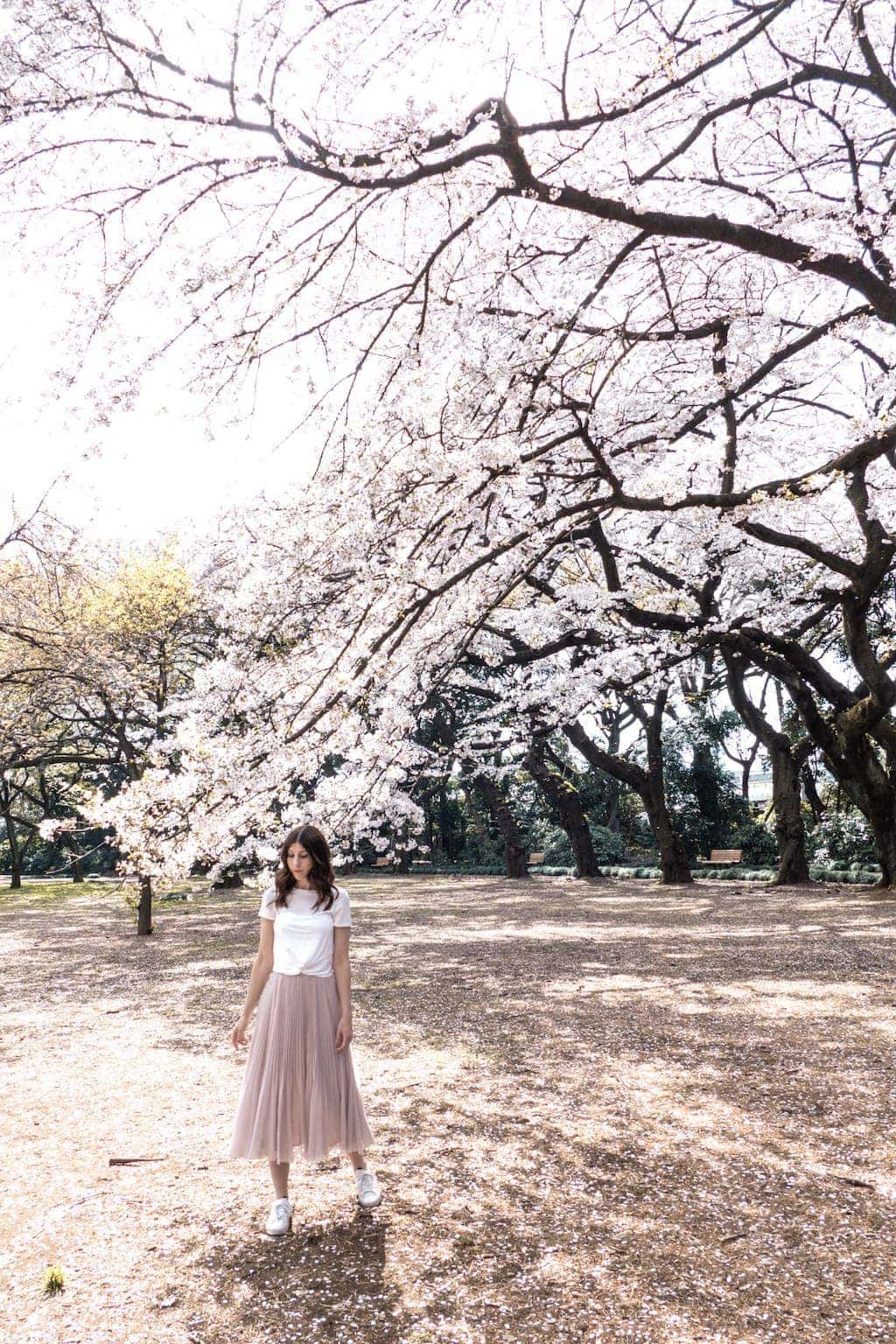
During the spring thousands of people travel to Japan for a chance to view the country’s beautiful cherry blossoms. The Japanese also look forward to sakura, which is Japanese for cherry blossom, and celebrate the spring during this time. Spring represents a fresh start and Hanami, or traditional viewing parties, are popular among the Japanese.
Sakura is a symbol of beauty, life, and mortality. The blossoms serve as a reminder that life is beautiful but also short. After they reach full bloom, they last about two weeks and then disappear in the wind. It’s important to carefully plan your travel to Japan if you wish to see the cherry blossoms. Continue reading to discover when and where to see cherry blossoms in Japan.
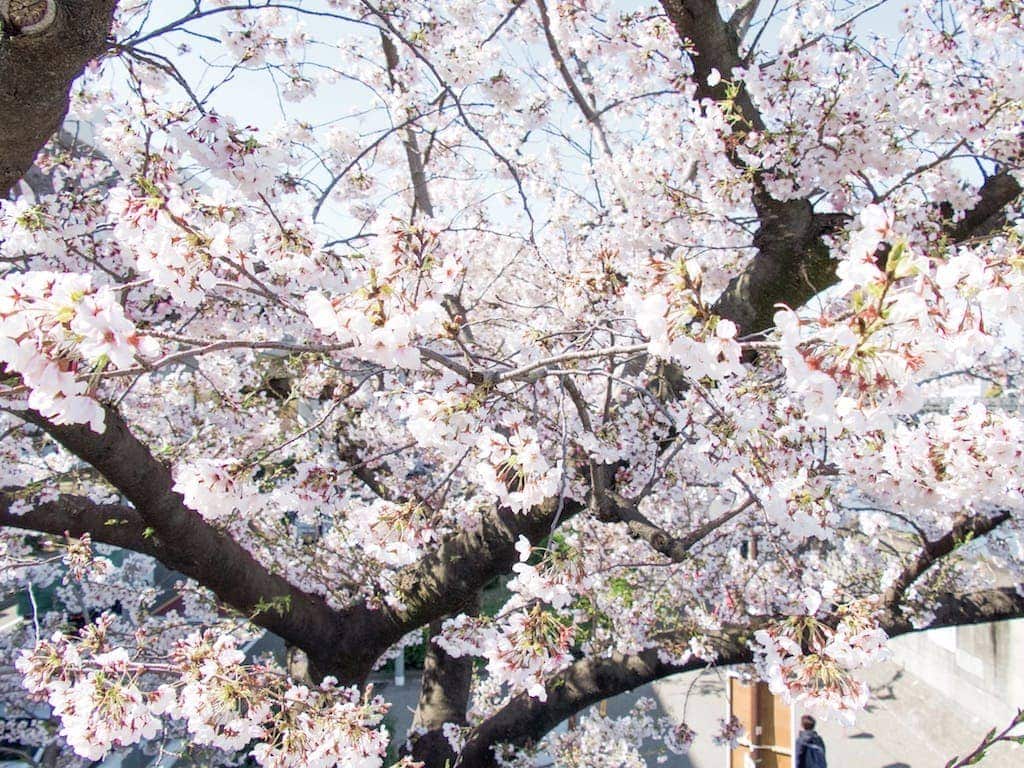
When to See Cherry Blossoms in Japan
The Sakura season begins mid to late March and usually lasts through the end of April. It’s important to pay attention to the updated weekly forecast since it can and occasionally does change. Locations with milder climates and areas of southern Japan usually bloom first. I recommend purchasing a JR Rail Pass so you can easily travel throughout the country.
Areas that experience cooler temperatures usually bloom toward the end of the season. The second cherry blossom forecast of 2024 was published on January 24th. The first blossoms are expected to start opening on March 20 in Nagoya. The following are estimated dates for blossom opening/full bloom for 2024, according to Japan Meteorological Corporation:
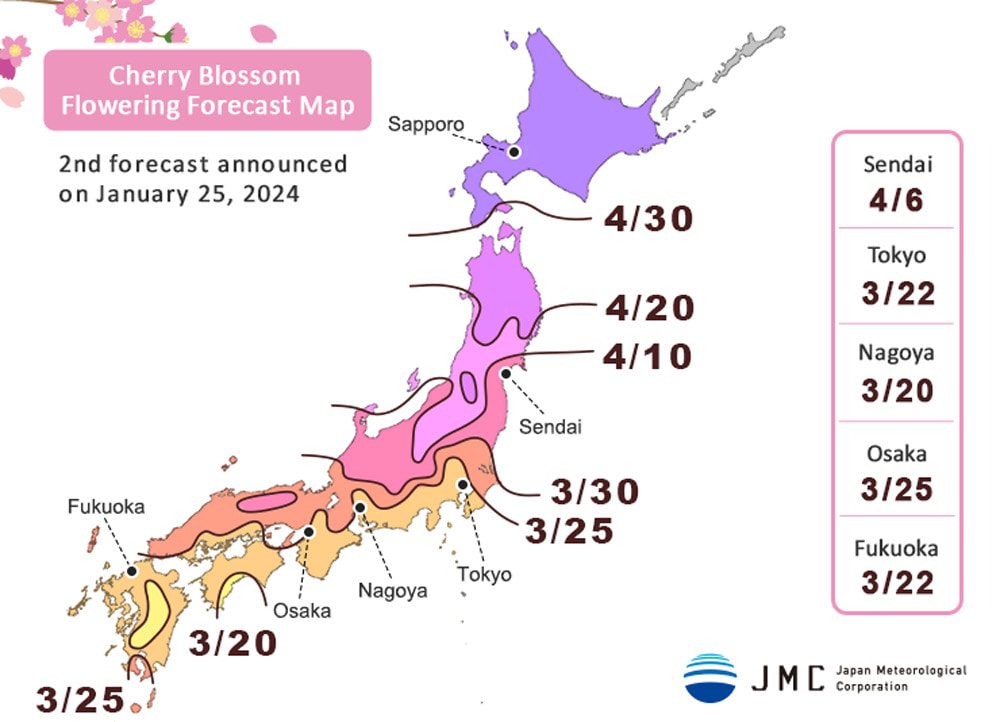
Where to see Cherry Blossoms in Tokyo
Shinjuku Gyoen National Garden
Shinjuku Gyoen National Garden is one of Tokyo’s largest and most popular parks. It’s also one of the best places to see cherry blossoms in Japan. It’s located in Shinjuku and is just a short 10-minute walk from the JR Shinjuku Station. The sprawling, 144-acre public park is a top cherry blossom viewing destination. It’s home to over 1000 cherry trees and has over 40 different varieties.
Most of the trees bloom from late March to early April, but the park does have some late blooms that happen toward the end of April as well. The park’s neatly landscaped lawns are the perfect place to escape the busy city streets and have a picnic. Once inside the park, it’s easy to forget that you’re in the middle of Tokyo. The cherry blossoms draw large crowds but the park doesn’t feel packed like many other viewing locations. Its large size allows people to spread out and it’s very peaceful.
In addition to cherry trees, Shinjuku Gyoen has a traditional Japanese garden, a French garden, an English landscape garden, and a greenhouse full of more tropical plants. I recommend visiting in the morning and getting in line at the main gate about fifteen minutes before it opens. There is a security check and the entry line gets backed up during midday. Admission is 500 yen.
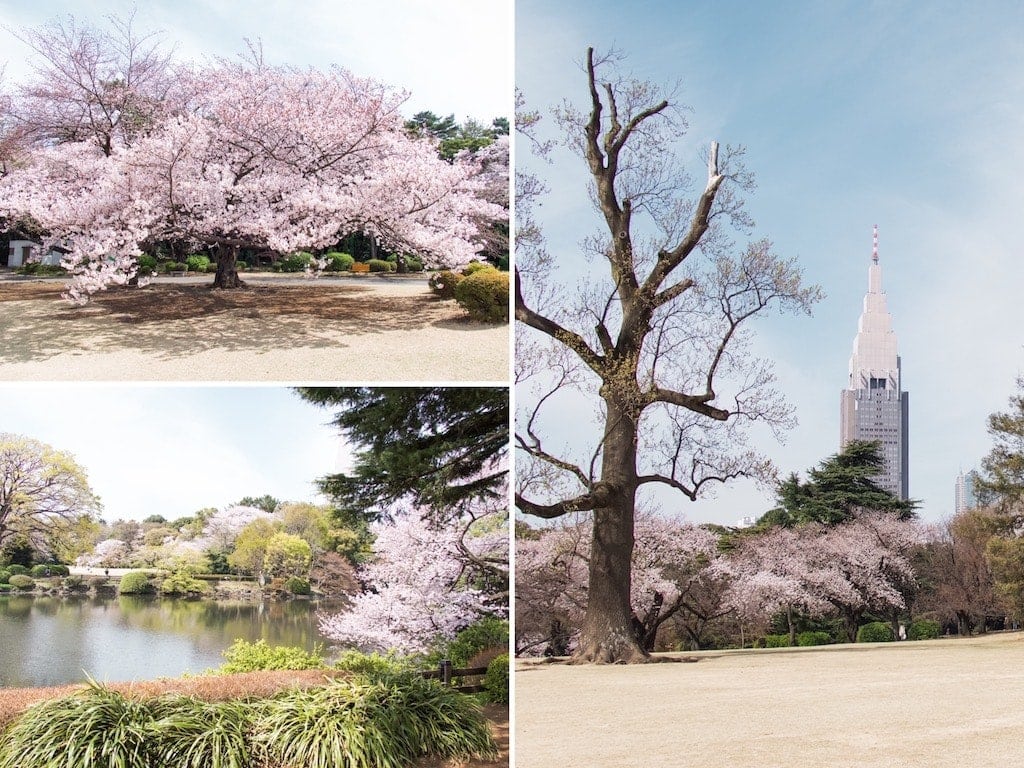
Ueno Park
Ueno Park is located next to the Ueno Station in central Tokyo. It’s Tokyo’s busiest city park and attracts over 10 million visitors a year. It’s known for its surrounding shrines, its many museums, and of course, its cherry trees. The park has over 1,000 trees. Sidewalks wind through the park and cherry trees line the main pathway.
Ueno Park is Tokyo’s most crowded location for cherry blossom viewing. Don’t expect an experience like that of Shinjuku Gyoen. The cherry trees are beautiful, but between the many tourists and vendors, a relaxing walk through the park isn’t likely. Admission to the park is free.
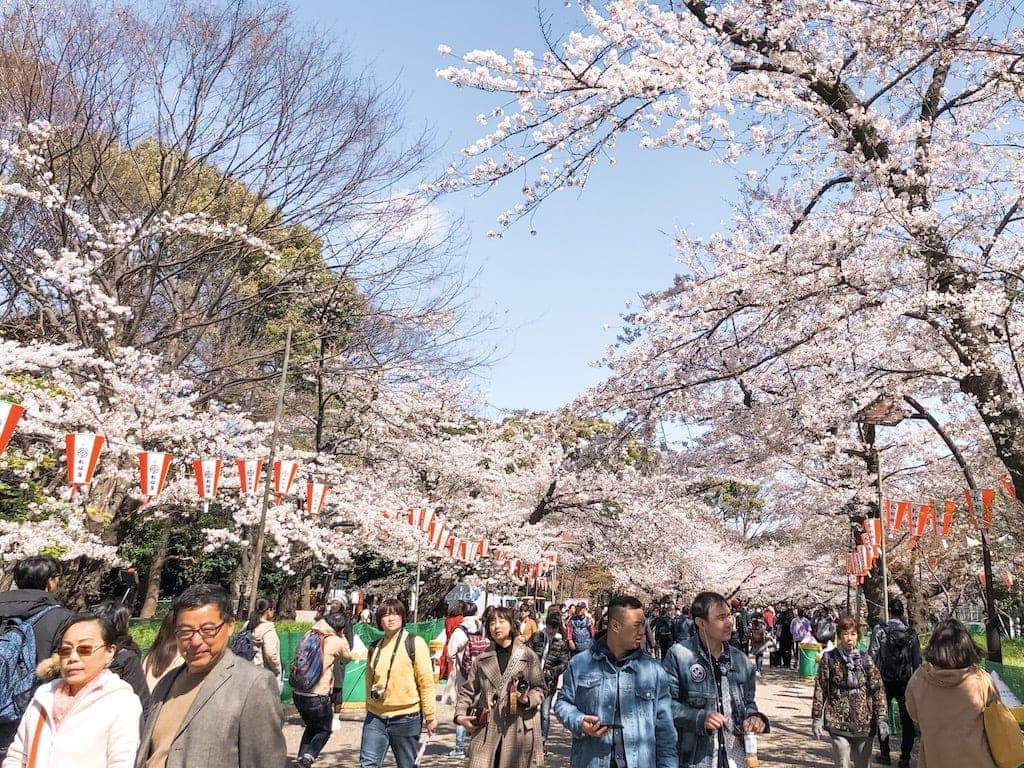
Meguro River
Meguro River is another extremely popular Sakura destination. The river runs for almost eight miles through central Tokyo, eventually flowing into Tokyo Bay. The river has beautifully landscaped banks lined with over 800 cherry trees. Meguro River is one of the best places to view the blossoms at night.
Lanterns light up the trees and it’s a great place for an evening walk. The main stretch of trees is located near the Meguro Station and runs through the Nakameguro district. The Nakameguro district is located near Shibuya and is full of stylish boutiques, hip shops, and great restaurants. I suggest exploring the area either before or after viewing the blossoms. Admission is free.
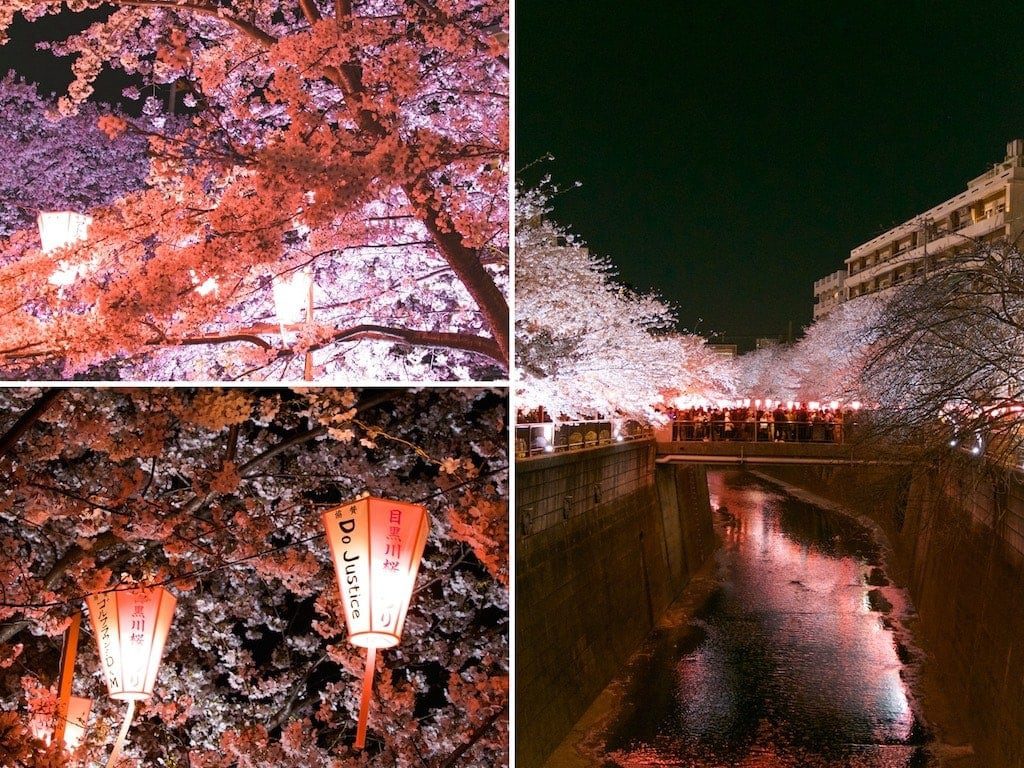
Sumida Park
Sumida Park is a riverside park located five minutes from the Asakusa Station. The park runs along both sides of the river between the Azumabashi and Sakurabash bridges. The park has over 600 cherry trees and offers a great view of the Tokyo Skytree. The trees are lit up at night and you can opt for a boat ride down the river.
Sumida is a great place for Sakura viewing. I went mid-day and there were very few people around. It was quiet and peaceful, and the trees were lovely. It was also one of the few locations where I was able to get some great photos without anyone in the background. It can be quite cold during the spring, especially by the river, so make sure you dress warmly. Admission is free.

Where to see Cherry Blossoms in Osaka
Osaka Castle
The Osaka Castle is a top tourist spot and one of Japan’s most famous landmarks. The castle sits on fifteen acres of land and is surrounded by lawns and gardens. There are thousands of cherry trees located on the castle grounds and an additional 300 in Nishinomaru Garden which is located on the west side of the castle.
The garden provides great views of the castle and is open at night during the Sakura season. The trees are lit up during the evening but I suggest going first thing in the morning to avoid the crowds. Admission to the castle is free and Nishinomaru Garden is 350 yen.
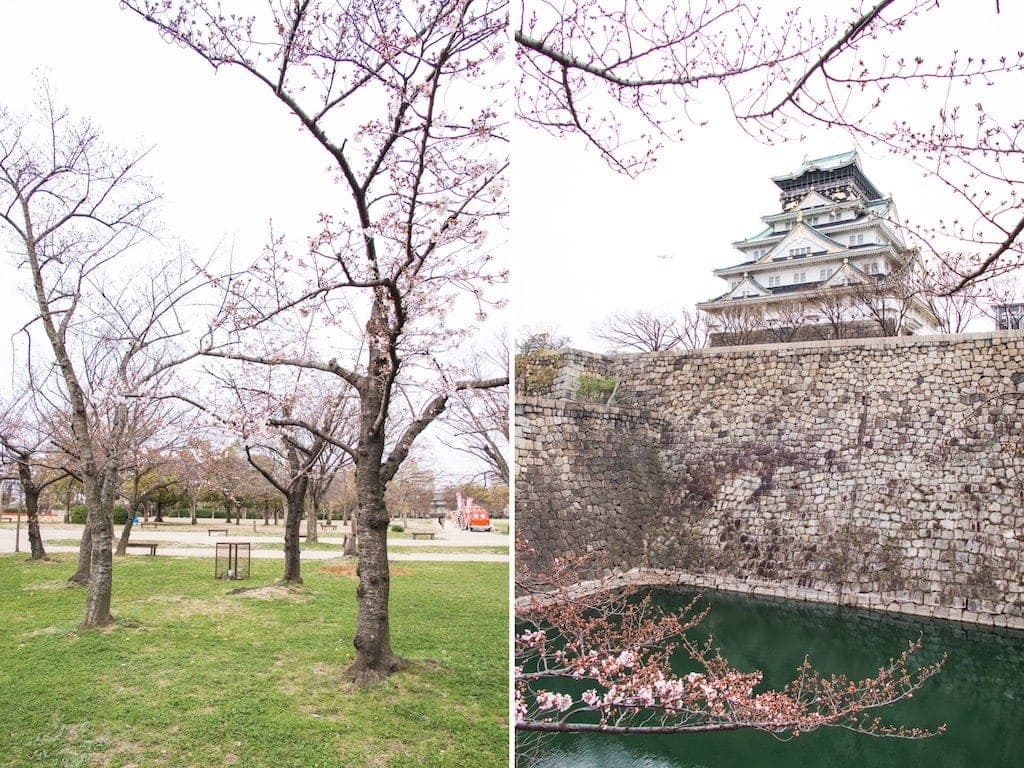
Where to see Cherry Blossoms in Kyoto
Maruyama Park
Maruyama Park is the oldest park in Kyoto and is the center for cherry blossom viewing. It’s located at the end of Shijo Street in the Gion district and can be accessed through the Yasaka Shrine. It’s famous for its weeping cherry tree that is beautifully lit up at night. Gion is a busy area and the park can get quite crowded. I suggest going in the late afternoon and spending time in Gion afterward. There are vendors in the park selling street food and some amazing restaurants in the area as well. Park admission is free.
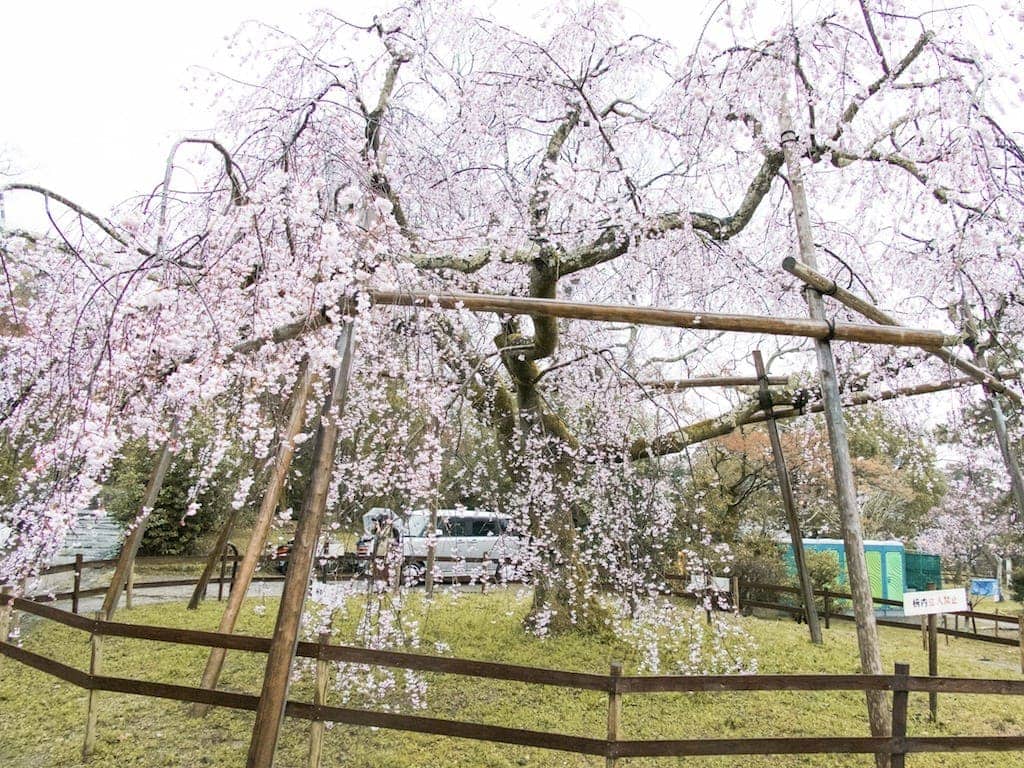
Arashiyama
Arashiyama is a district located on the outskirts of Kyoto and makes for a great day trip from the city. It’s a gorgeous area that sits at the base of the Arashiyama mountains. A river runs through the town and cherry trees can be seen along the river banks. Rowboats can be rented for the best viewing.
Tenryuji Temple is another great spot for cherry trees in Arashiyama. The temple is located next to the area’s famous bamboo forest. It has a peaceful and lovely garden area with a handful of trees. Admission to the garden is 500 yen and entrance to the temple buildings is an additional 300 yen.
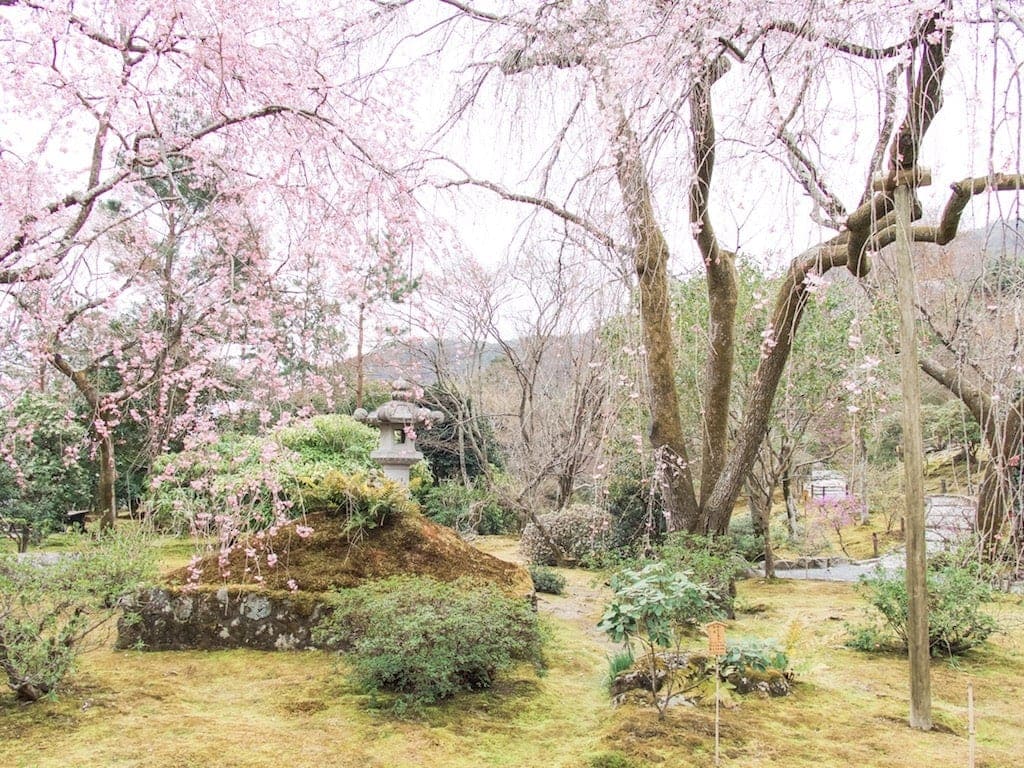
Where to see Cherry Blossoms in Hiroshima
Peace Memorial Park
The Peace Memorial Park is the site of Hiroshima’s Atomic Bomb Dome. The dome was the only structure left standing after the first atomic bomb exploded over the area on August 6, 1945. Everyone inside the dome was killed instantly. As the city was rebuilt, it was decided that the dome would be preserved and a park would be built around it.
The Peace Memorial Park is a beautiful place to remember those who lost their lives and to reflect on the disastrous effects of war. The Motoyasu River runs through the park and its banks are lined with over 300 cherry trees. They can be viewed by walking around the area or on a river cruise. Admission is free.
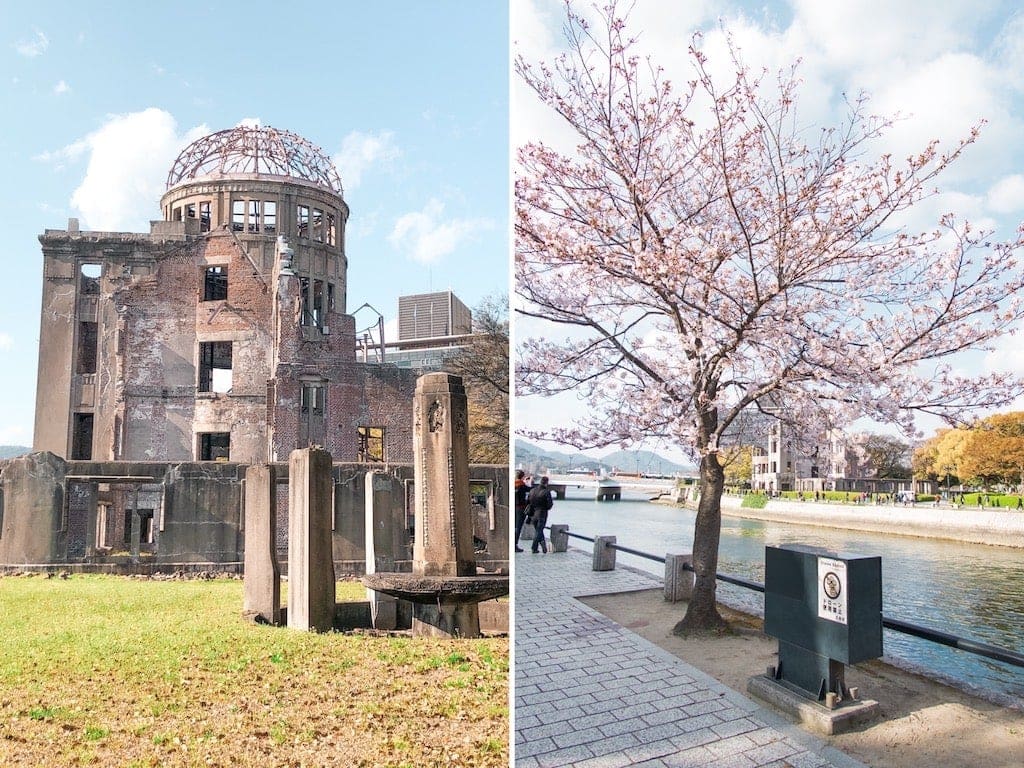
Miyajima
Itsukushima, also known as Miyajima, is an island located off the coast of Hiroshima. It can easily be reached by taking a boat or ferry across Hiroshima Bay. Miyajima is known for its deer that roam freely and its Itsukushima-jinja Shrine, the seemingly floating orange torii gate. The island is also home to about 1,900 cherry trees. Two great spots for viewing cherry blossoms on the island are Momiji-dani-koen Park and the Five-storied Pagoda. The Five-storied Pagoda sits on top of a hill and offers a magnificent view of the cherry blossoms below.
Travelers can get to Miyajima by departing from the Hiroshima Station and taking the train to the JR Miyajimaguchi Station. The station is a two-minute walk to the ferry and the ferry takes about another ten minutes to arrive at the island. Another option is taking a boat from Peace Memorial Park. This is the more costly option but it may be more convenient if you will be visiting the park as well.
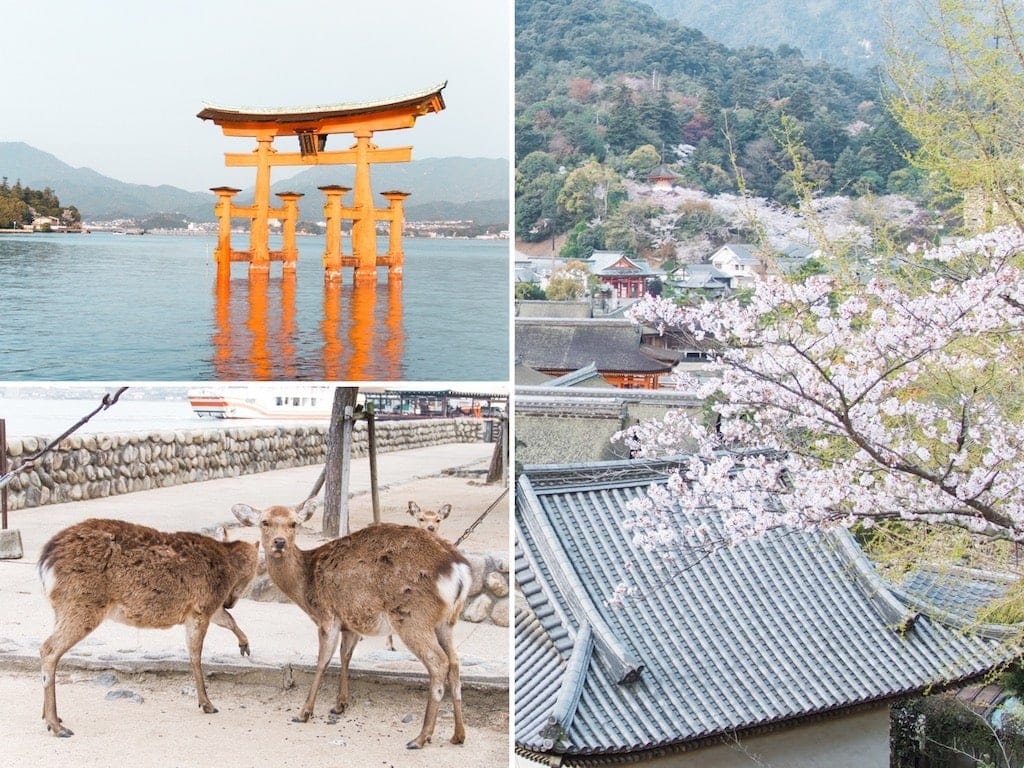
Accommodation
Sotetsu Fresa Inn Higashi Shinjuku
Sotetsu Fresa Inn Higashi Shinjuku is a simple and affordable option conveniently located in Tokyo. It’s located in Shinjuku’s business district and is a short walk to the JR station and bus stop. The metro is also located just steps away, allowing you to easily move about Tokyo. Shinjuku Gyoen National Garden is just a 10-minute train ride away.
Trunk Hotel
Trunk Hotel is another great option in Tokyo. It’s a modern and trendy boutique hotel nestled between Shibuya and Harajuku. The location is ideal for exploring the city. There is also a great restaurant and bar on site.
Hearton Hotel Kyoto
Hearton Hotel Kyoto is a simple hotel offering clean and comfortable rooms in Kyoto. The rooms are somewhat small and the aesthetic is very minimal but they are often very affordable, especially during the high season. The bus stop and the metro are located just blocks away.
Hotel Sakuraya
Lodging on Miyajima can be difficult and expensive since it is such a small island. Hotel Sakuraya offers a hostel-like setup with either shared or private bathroom facilities and rooms with traditional Japanese furnishings and futons.
After deciding where to see cherry blossoms in Japan, you should make your travel arrangements as soon as possible. Travel in Japan can be difficult during the cherry blossom season due to the large crowds. I recommend reserving seats on the bullet train upon arrival in Japan and booking hotels well in advance. Hotels book up quickly and can be much more expensive during this time.
Do you have a question about the Sakura season? Have you seen the cherry blossoms in Japan? If you’ve enjoyed this post, please leave a comment or share using the social media buttons below. Are you spending time in Tokyo? If so, continue to my post, “Top 10 Things to Do in Tokyo” and discover other fun activities.
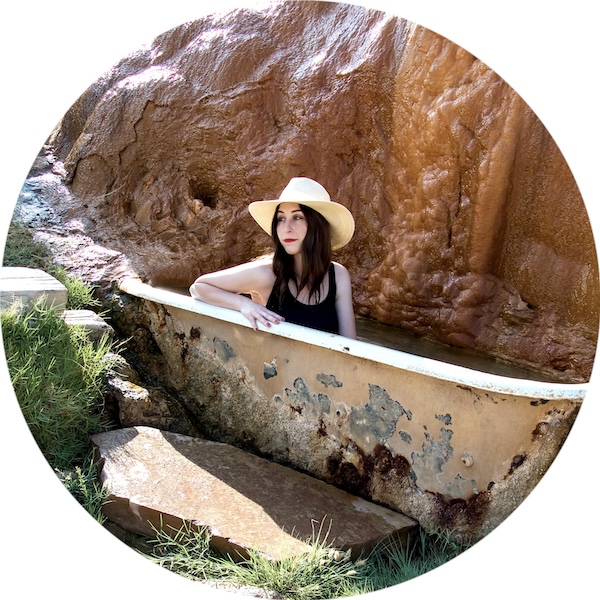
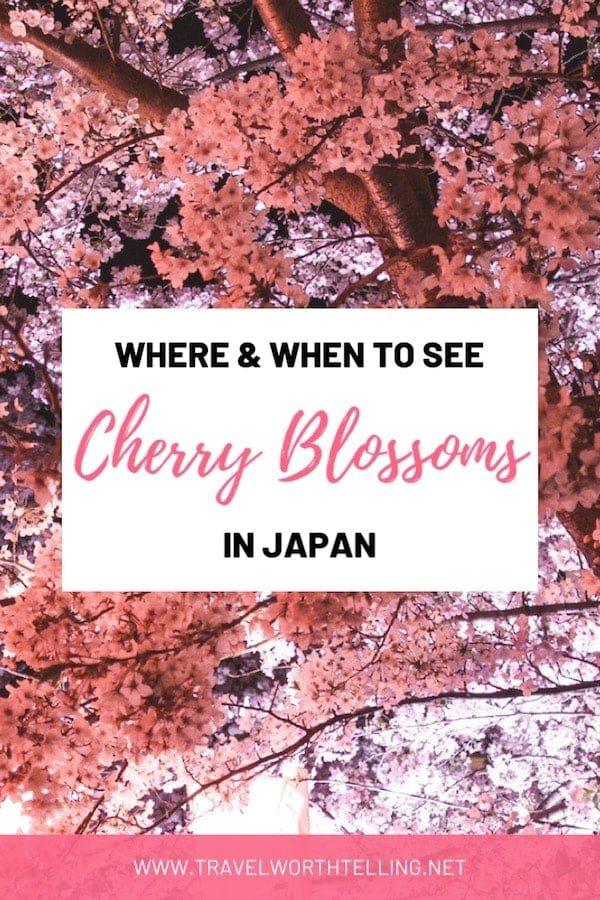
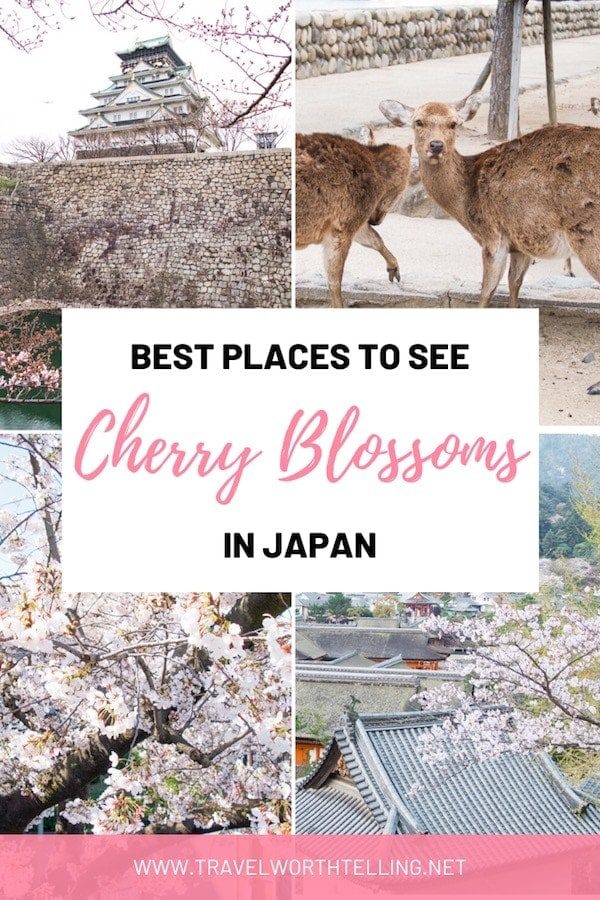

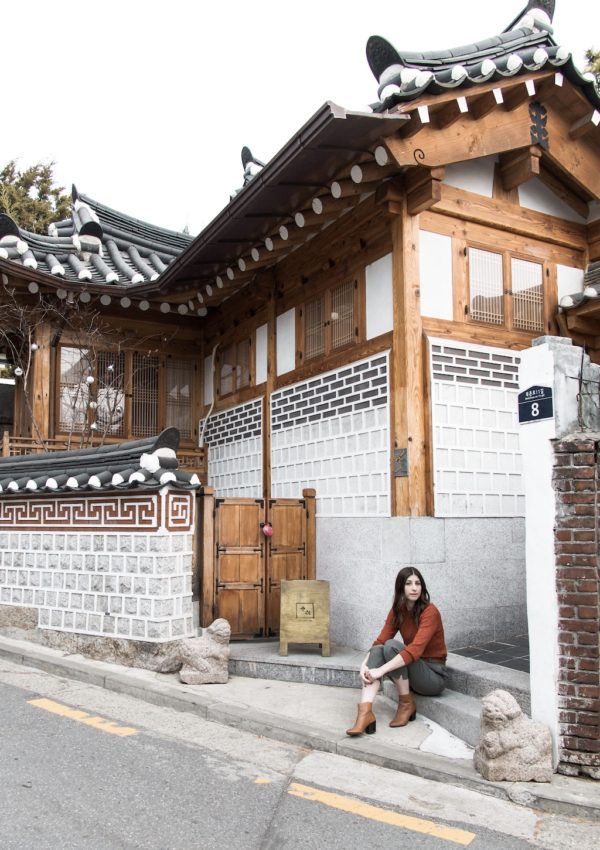

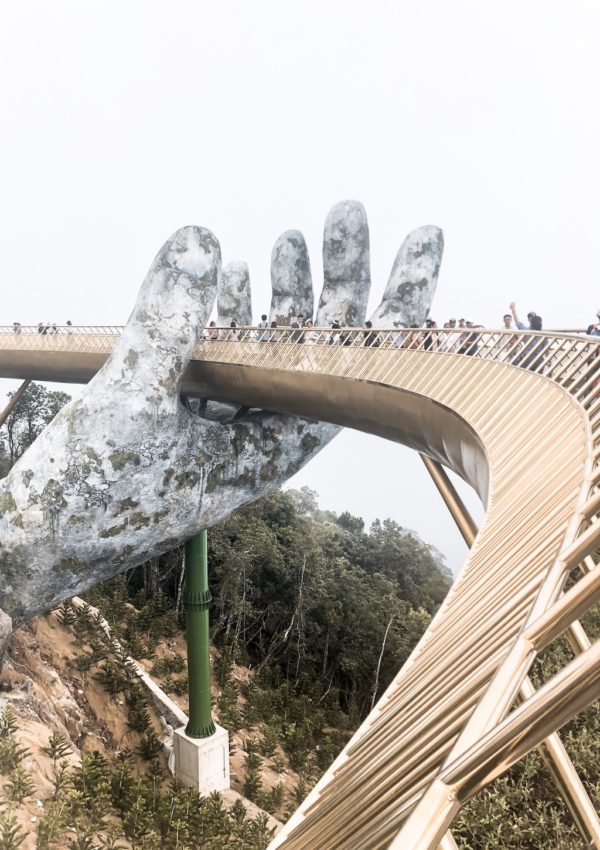
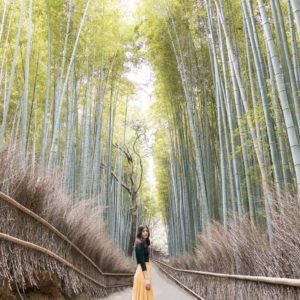

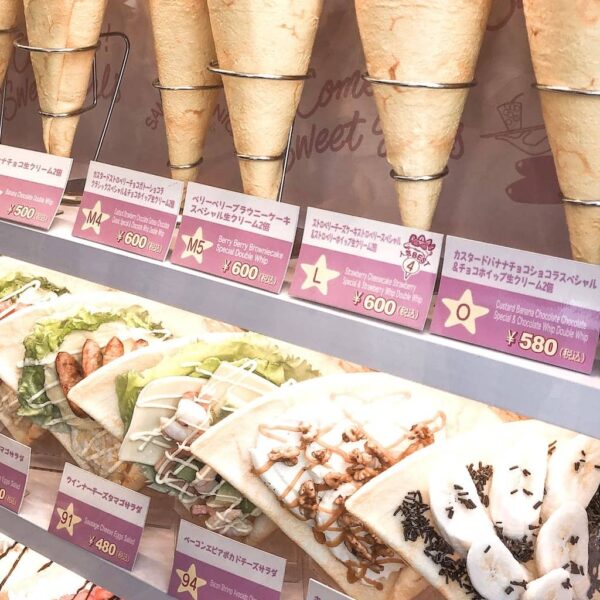
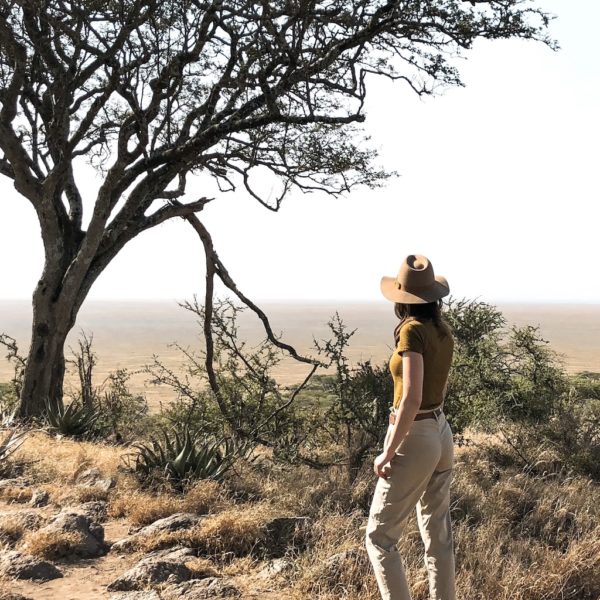
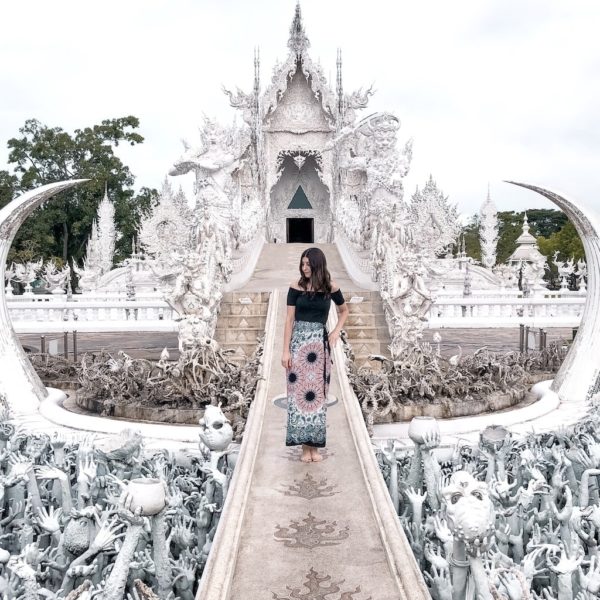
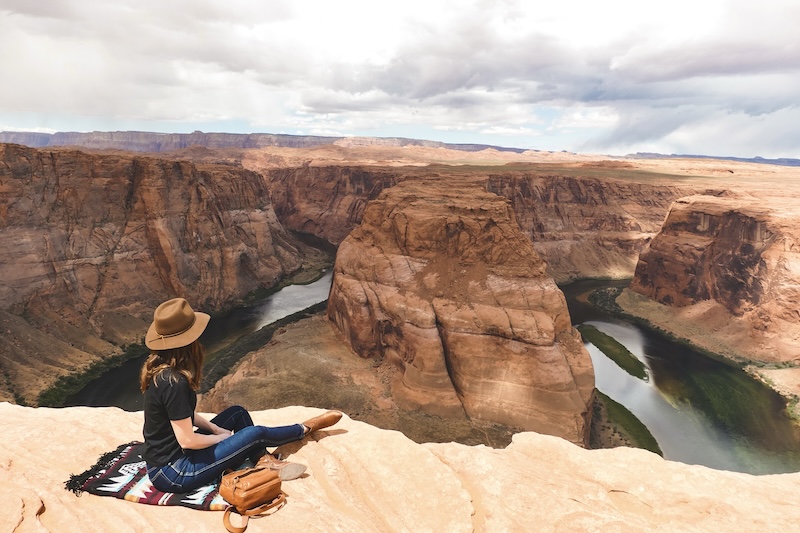
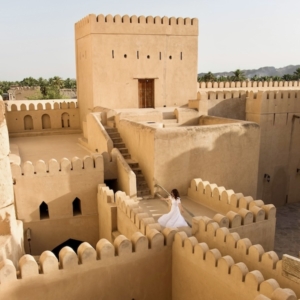
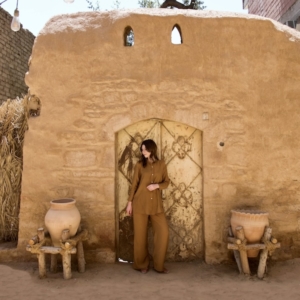
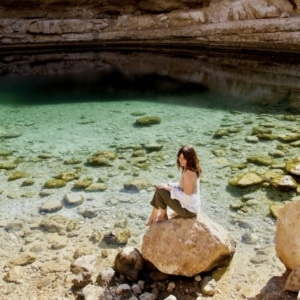
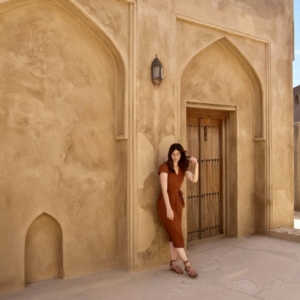


Great post! I’m heading to Japan at the beginning of April, so this post is going to come in very helpful. I can’t wait to see the cherry blossoms! They look so beautiful!!
Thanks for reading! Glad it was helpful :)
Fabulous! I do love cherry blossoms in Japan (and plum blossoms a few months earlier!)
I totally agree with all the places you listed, but you missed my favourite! Nara City is stunning covered in cherry blossoms, but even better that that is Yoshino. It’s in the South of Nara, and is a mountain covered in 30,000 cherry blossom trees. It is simply stunning!
Awesome! I’ll have to check out Yoshino. I was actually in Nara but I missed them there…only a few were in bloom.
great place to visit, thank you for creating this article